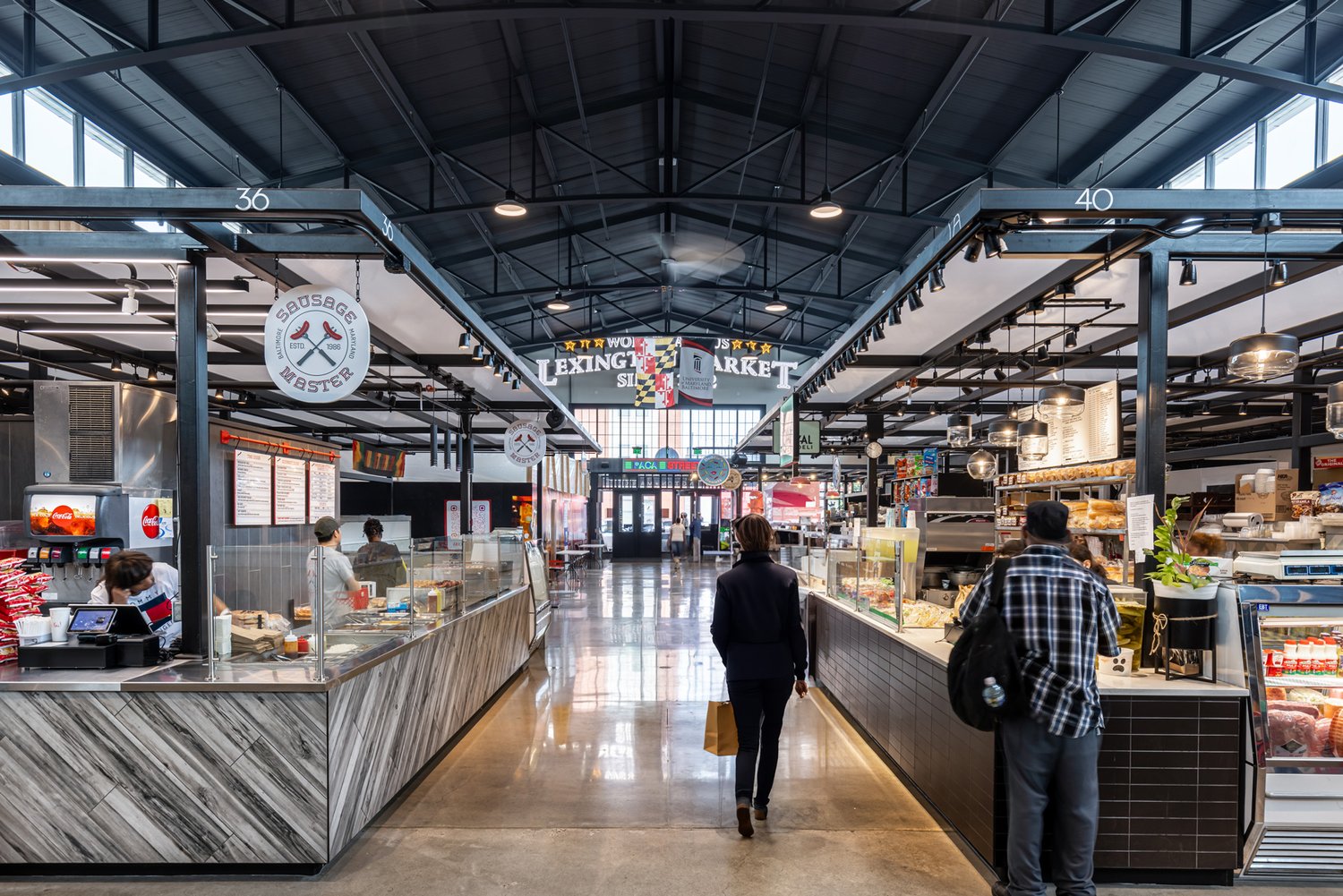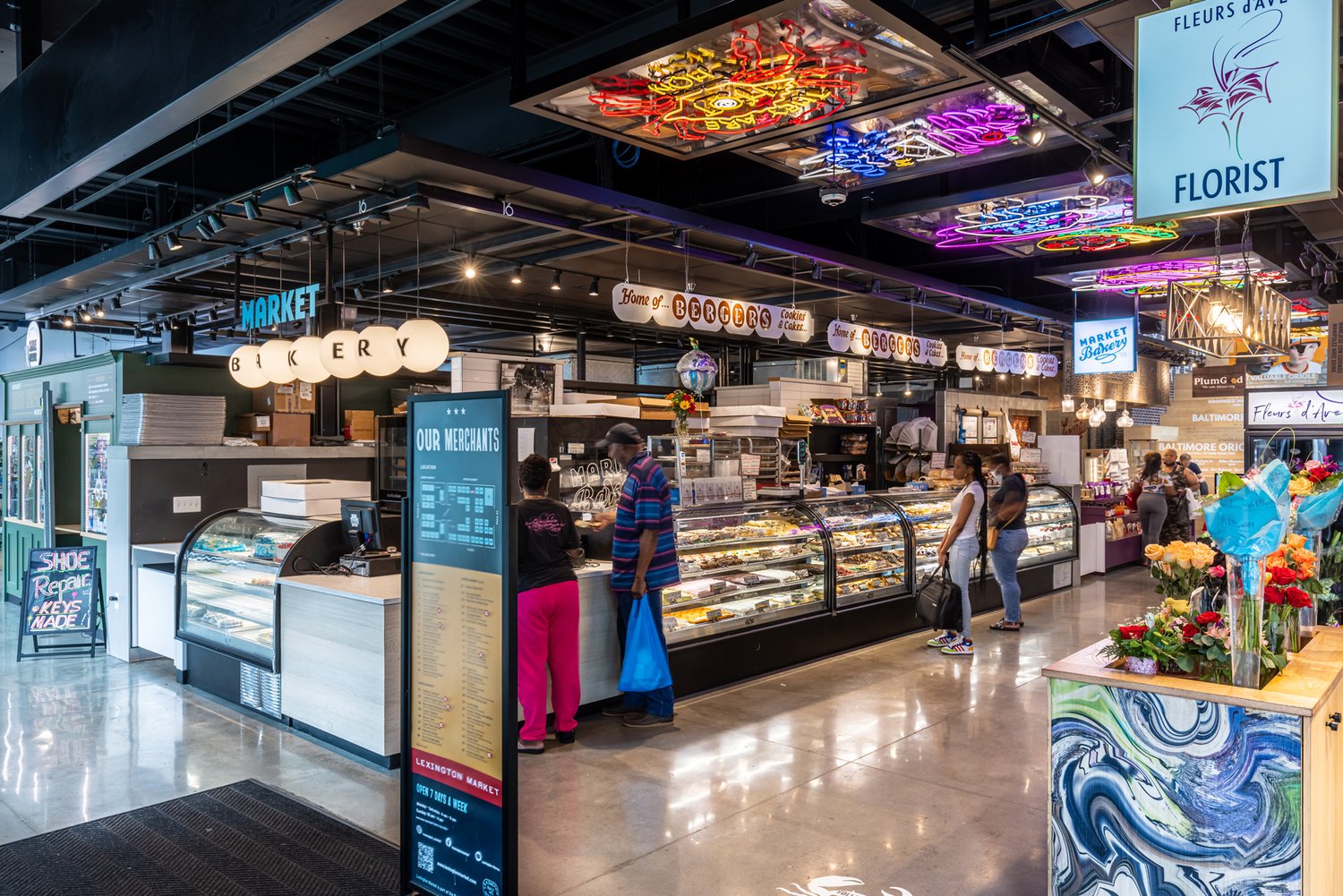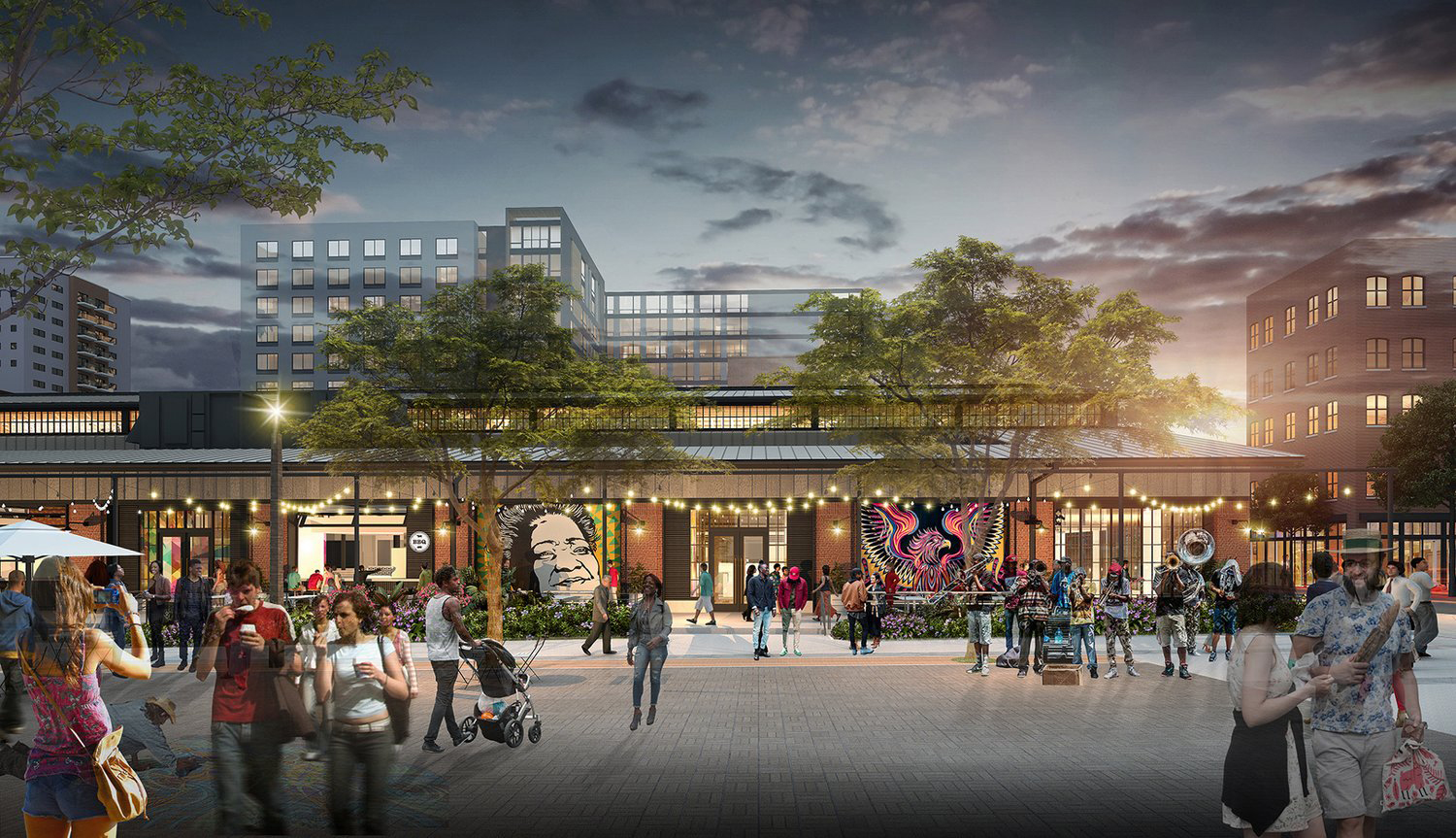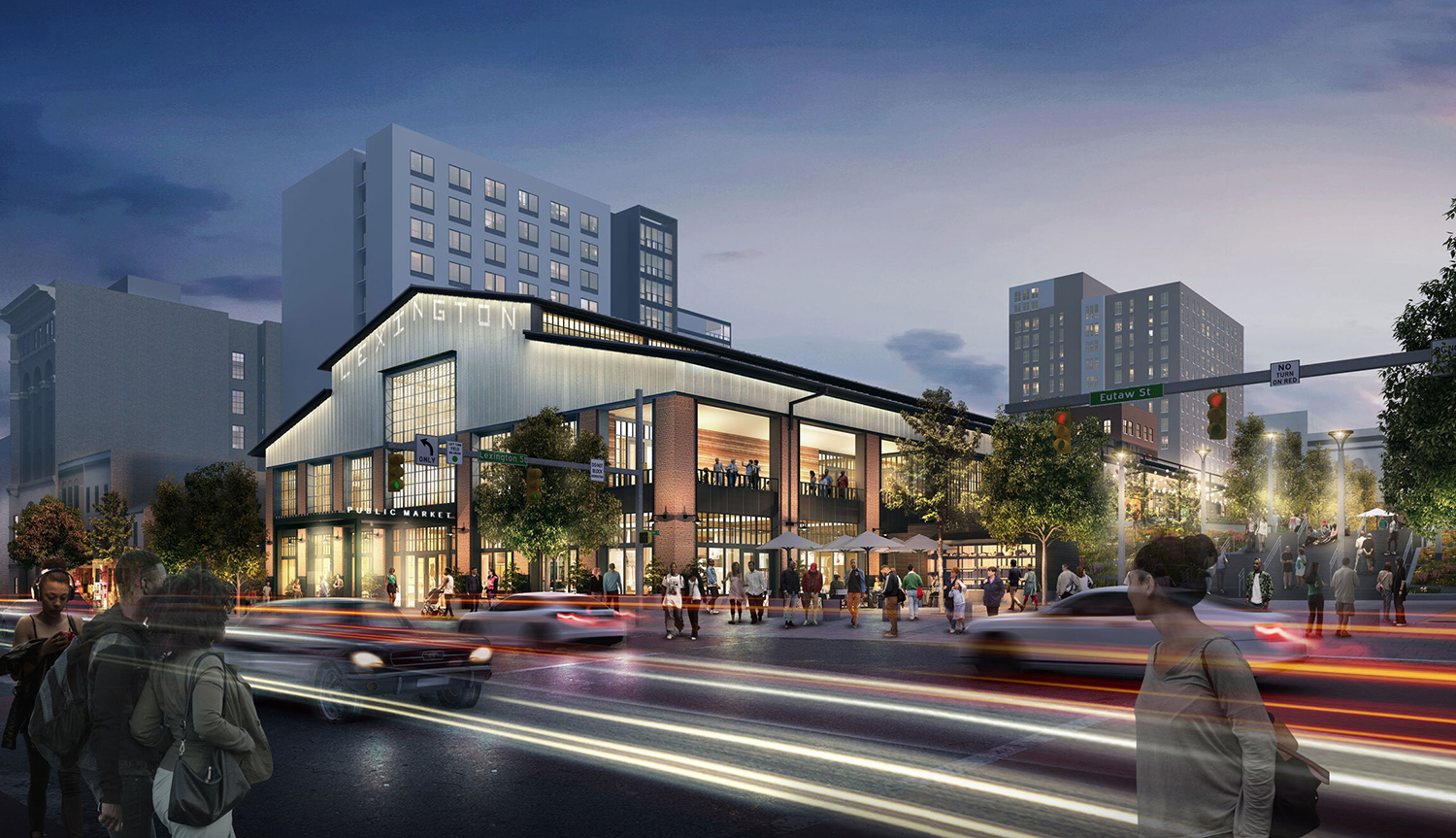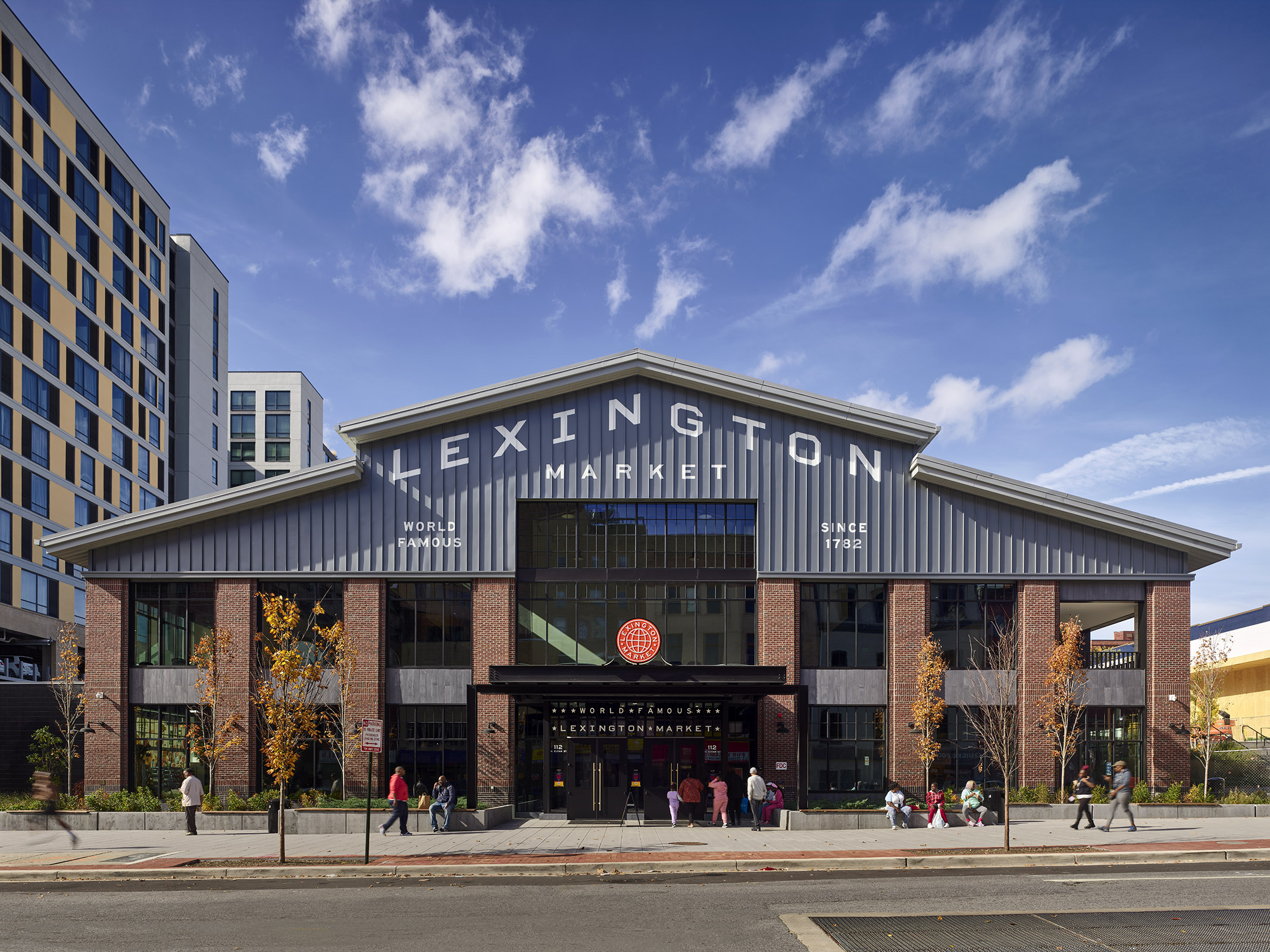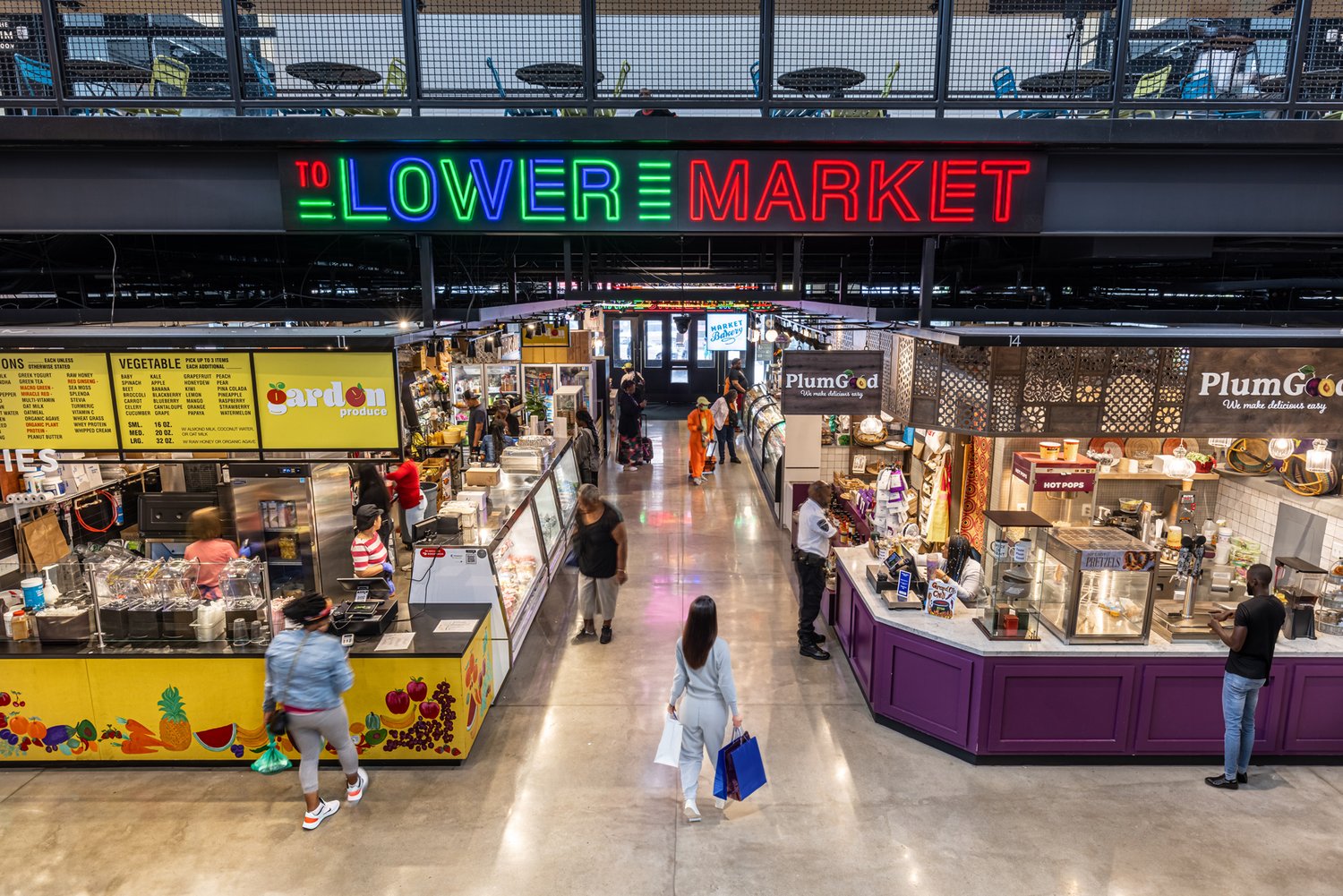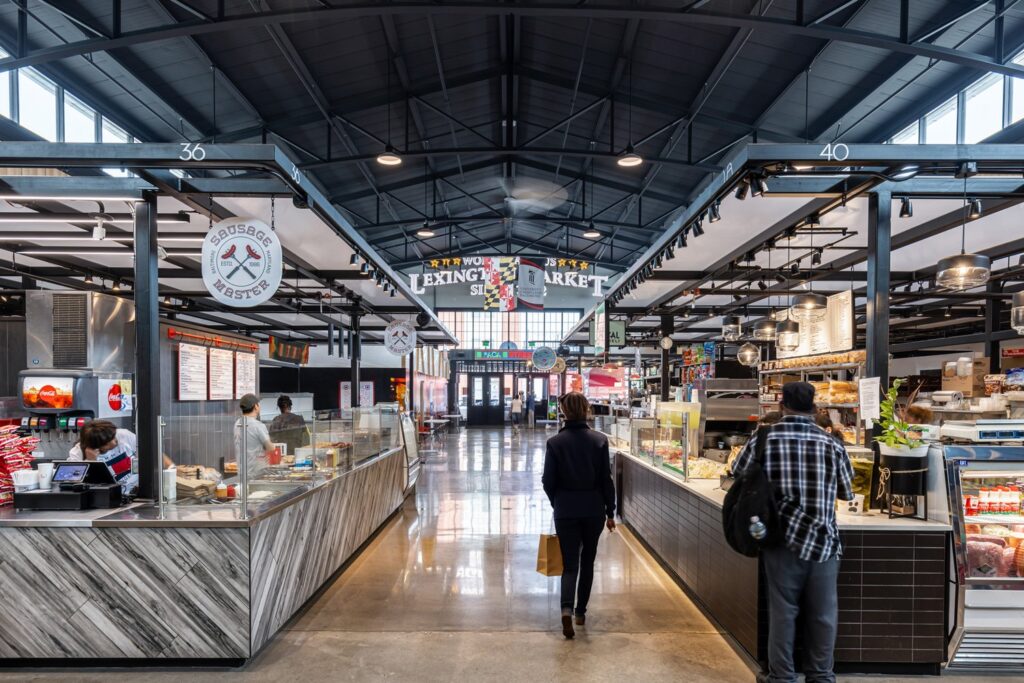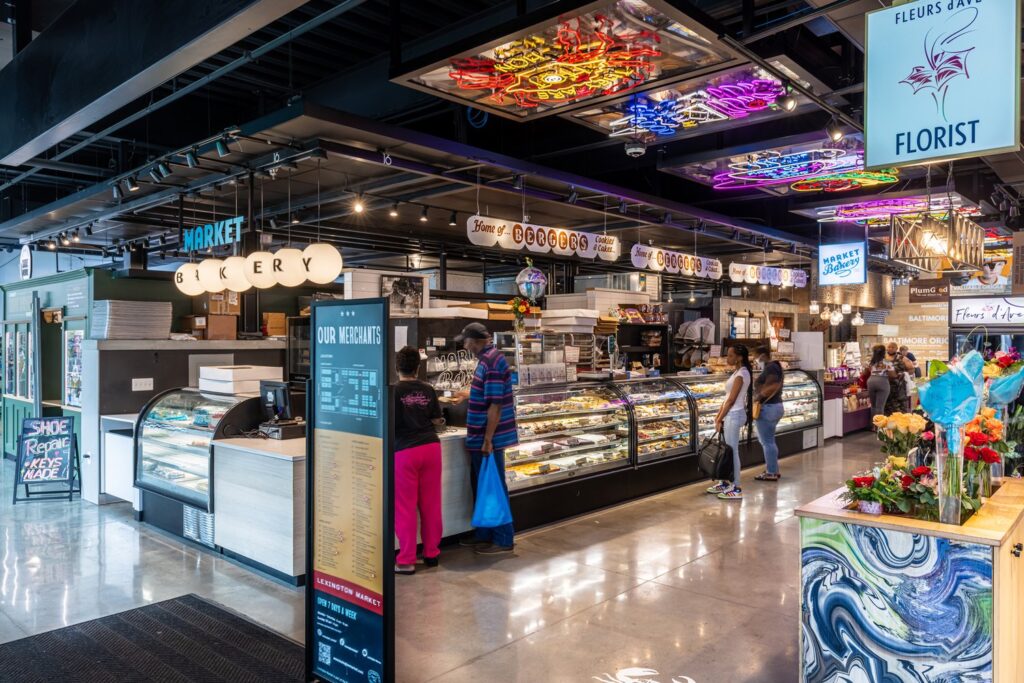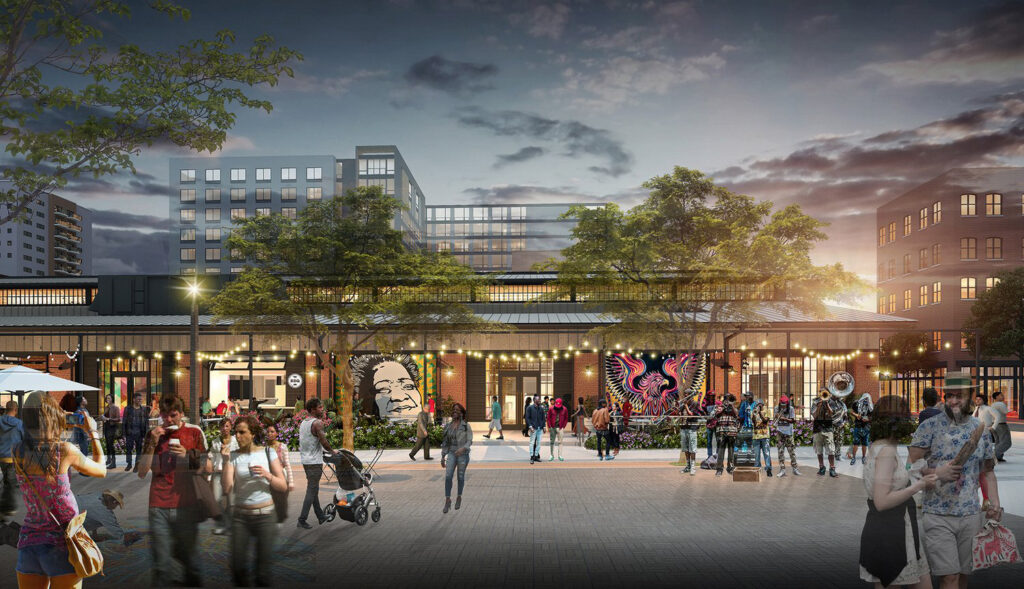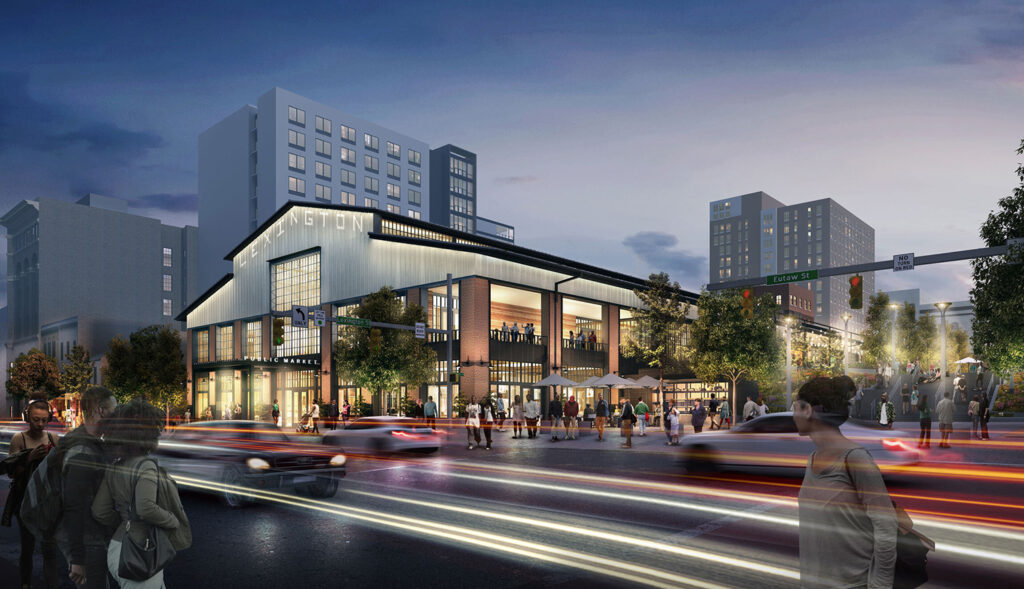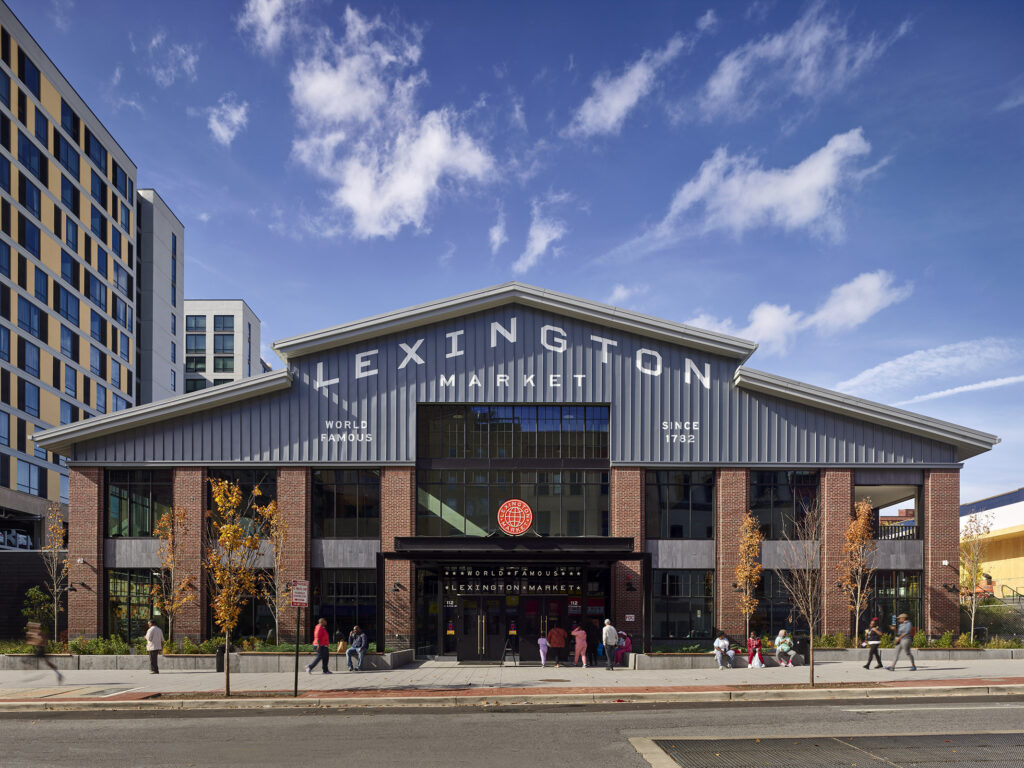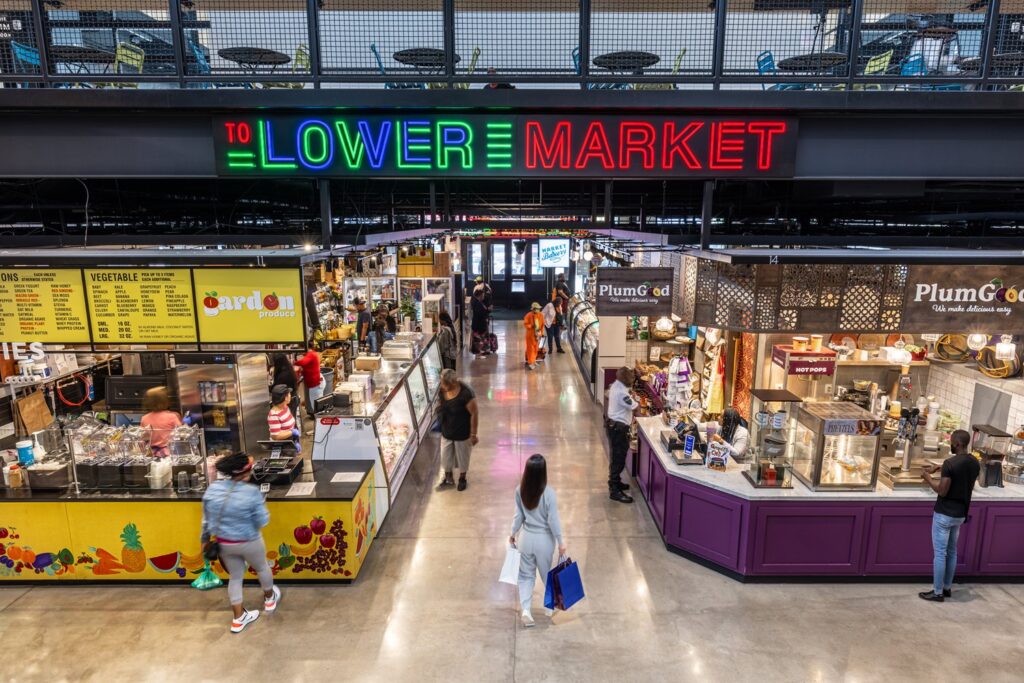
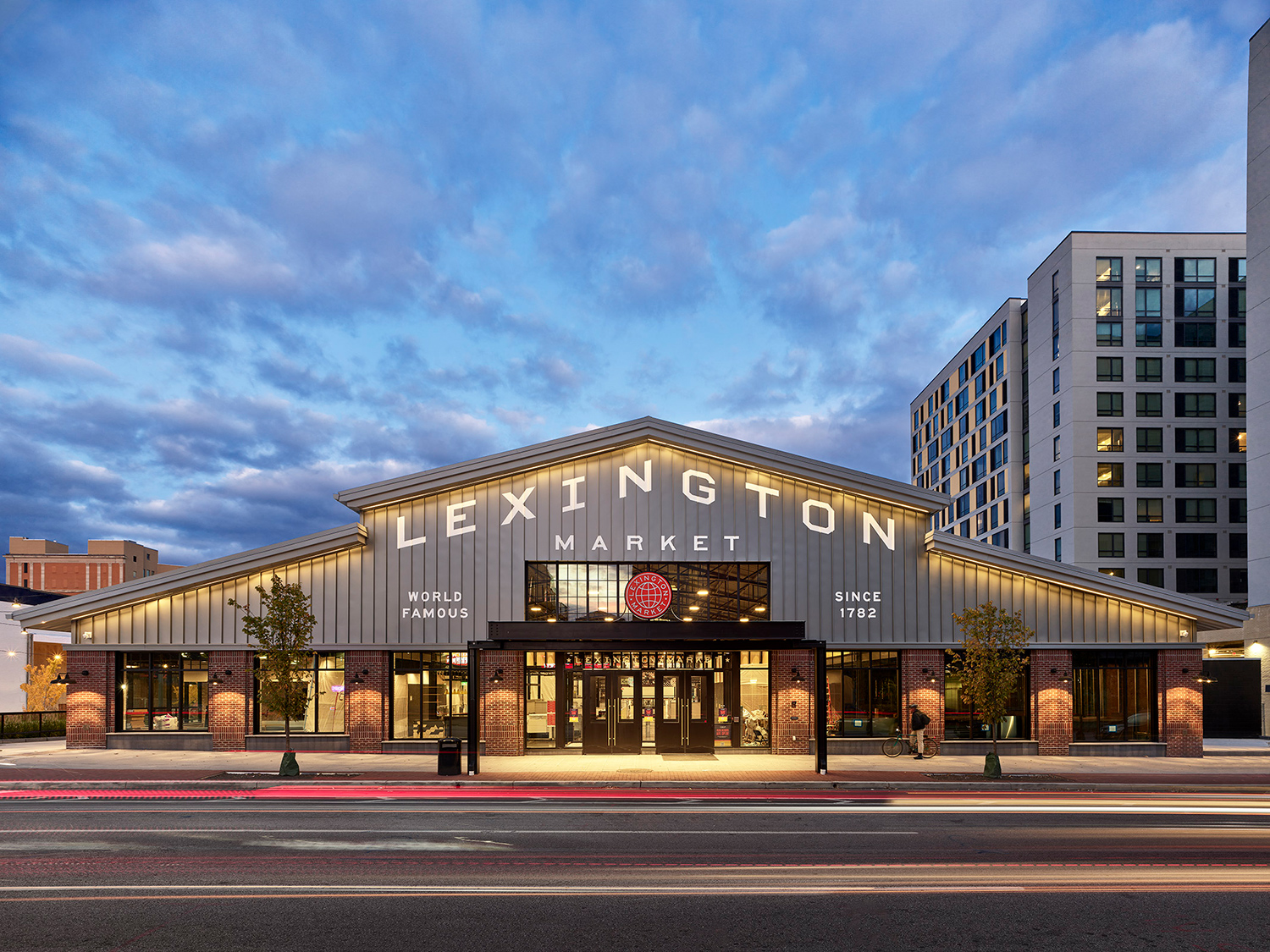
Lexington Market
31,550 sf public plaza
488 seats
36 vendor stalls + kiosks
Landlord's Representative: Seawall Development
AIA Excellence in Design Award
USGBC People's Choice Award
Lexington Market
Dating back to 1782, Lexington Market in Baltimore, Maryland, has been redeveloped into a vibrant public market that reflects the city’s multicultural heritage. The newly developed 60,000-square-foot building and public plaza, designed and built since 2018, replace the outdated 1980s market arcade while repurposing the historic 1950s East Market building. This $45 million project was funded through federal, state, and local support, along with New Markets Tax Credits and ARPA funds.
By addressing aging infrastructure and community needs, Lexington Market’s redevelopment marks a major step in revitalizing the area, attracting vendors, creating jobs, and stimulating the local economy. Its innovative approaches set a new standard for dynamic, sustainable marketplaces.
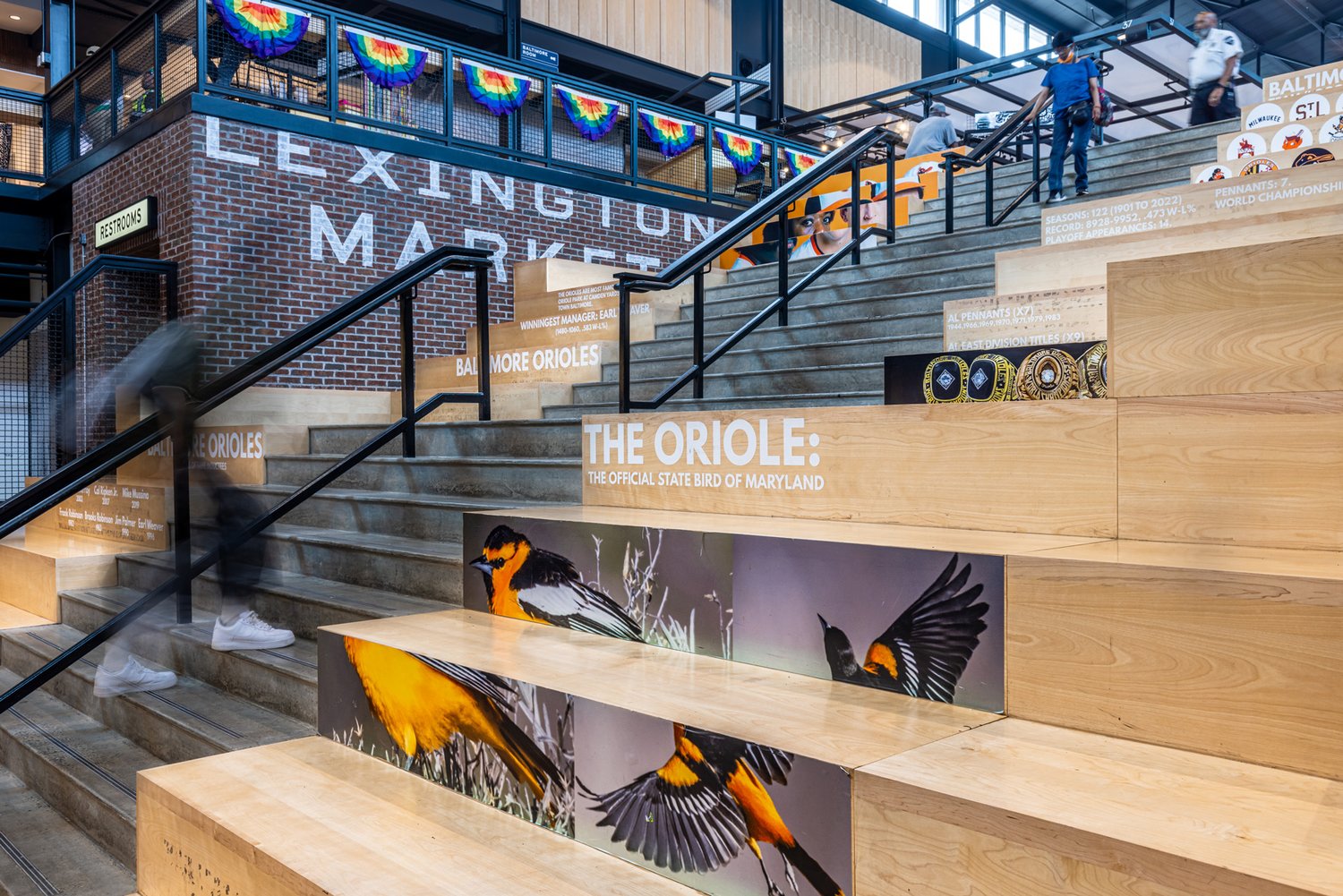
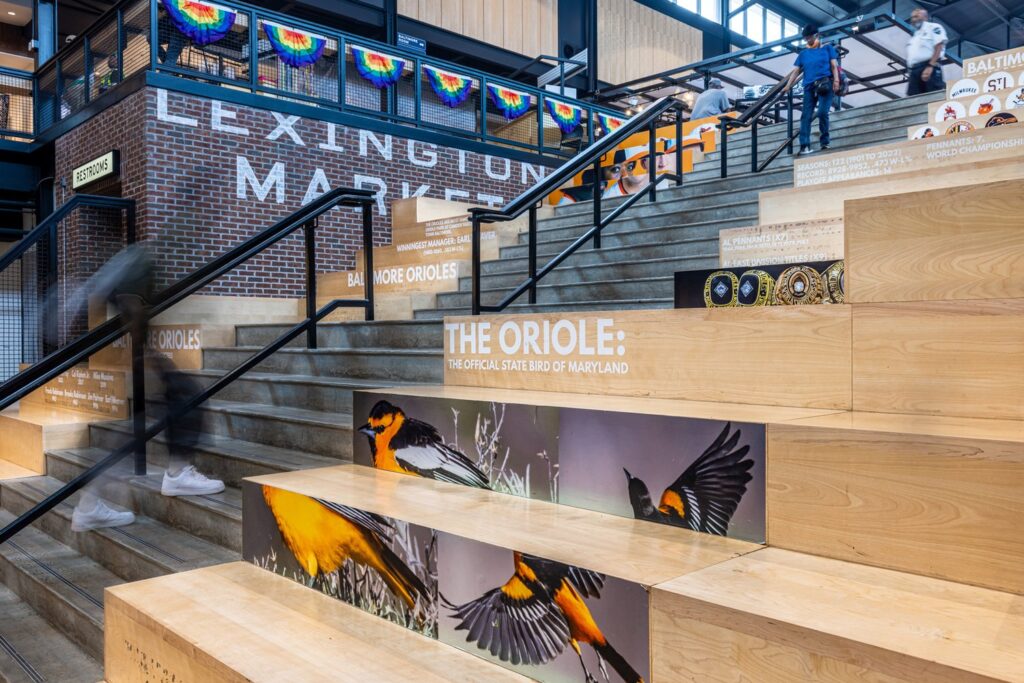
Lexington Market features large metal roofs, clerestory windows for abundant natural light, open layouts with metal trusses, and seating inspired by the “Baltimore Stoop,” a nod to the city’s rich social history. BCT collaborated closely with vendors, working on both the greater market structure and individual stall design. This involved coordinating with local vendors to capture their vision, refining everything from stall’s aesthetic to its graphics and branding components.
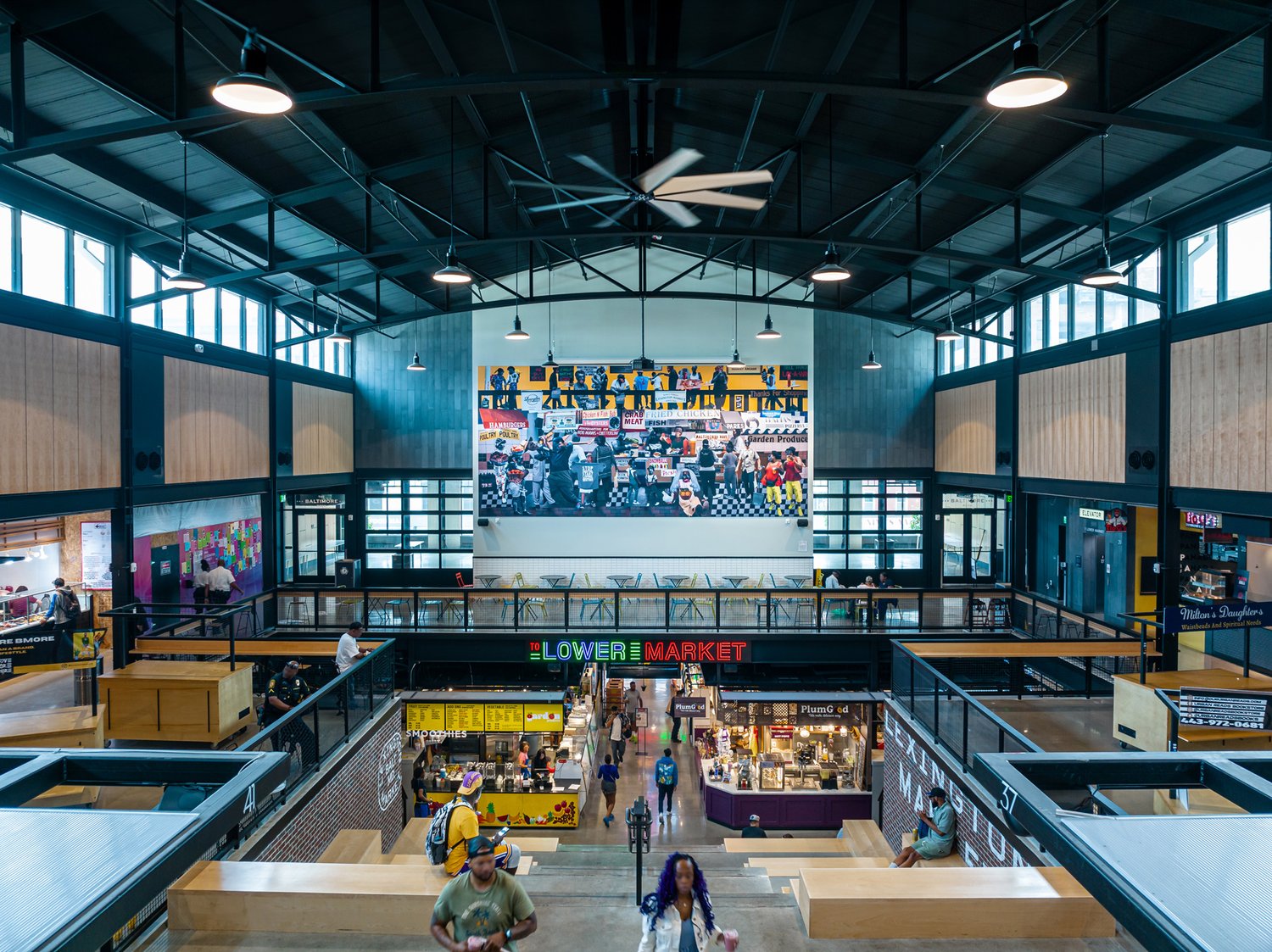
Lexington Market features large metal roofs, clerestory windows for abundant natural light, open layouts with metal trusses, and seating inspired by the “Baltimore Stoop,” a nod to the city’s rich social history. BCT collaborated closely with vendors, working on both the greater market structure and individual stall design. This involved coordinating with local vendors to capture their vision, refining everything from stall’s aesthetic to its graphics and branding components.
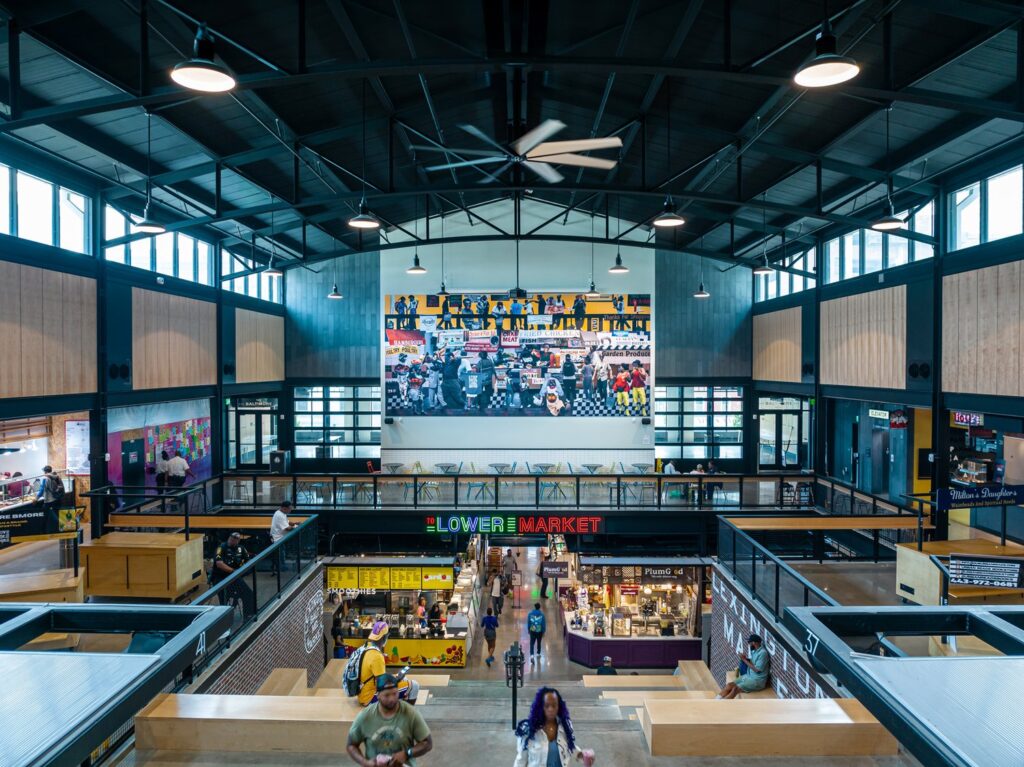
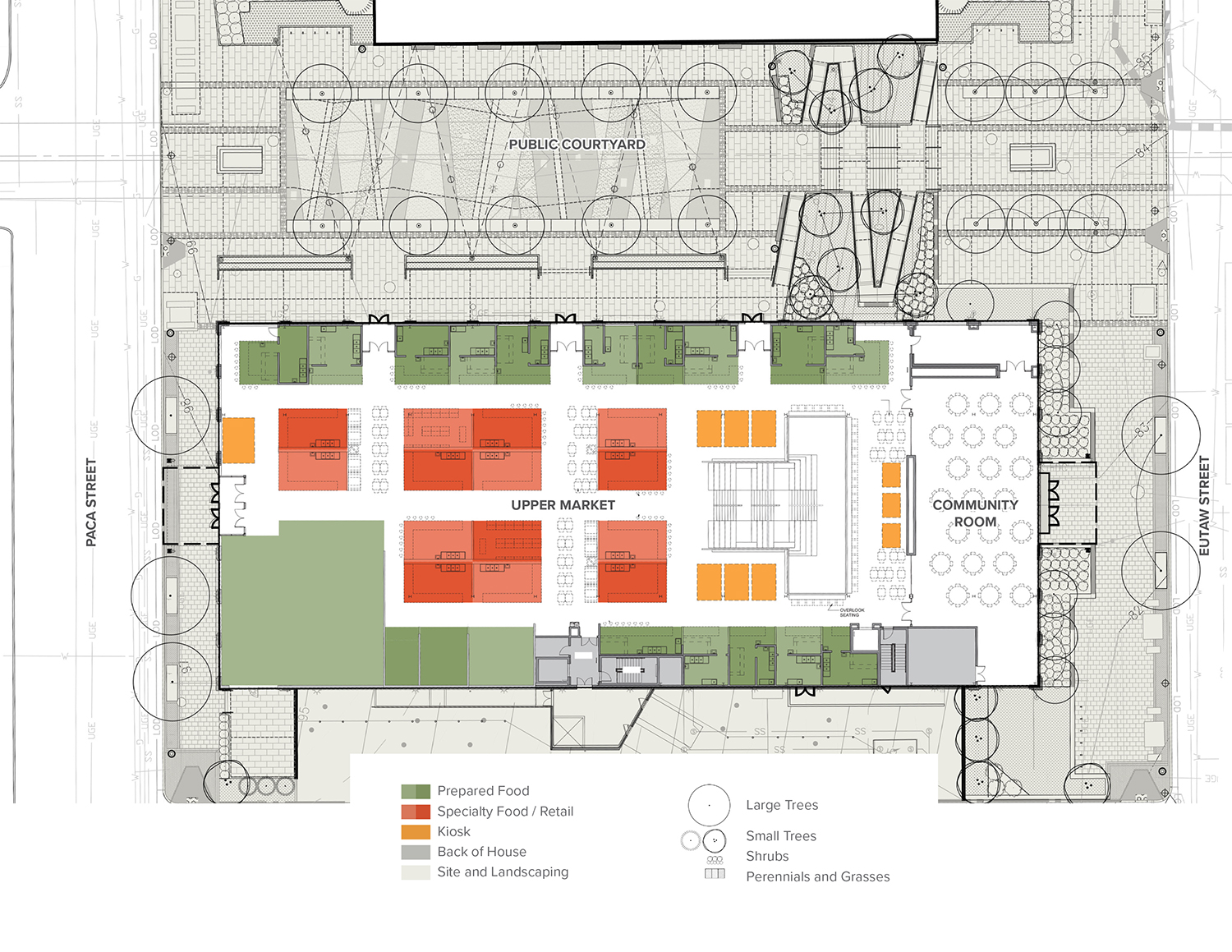
The redesign emphasizes healthy lifestyles, historic preservation, and community diversity. Offering a wide array of cuisines and hosting social events, the market serves as a vibrant gathering space. Its central location and easy access to public transportation enhance convenience, while supporting local entrepreneurship and small businesses.
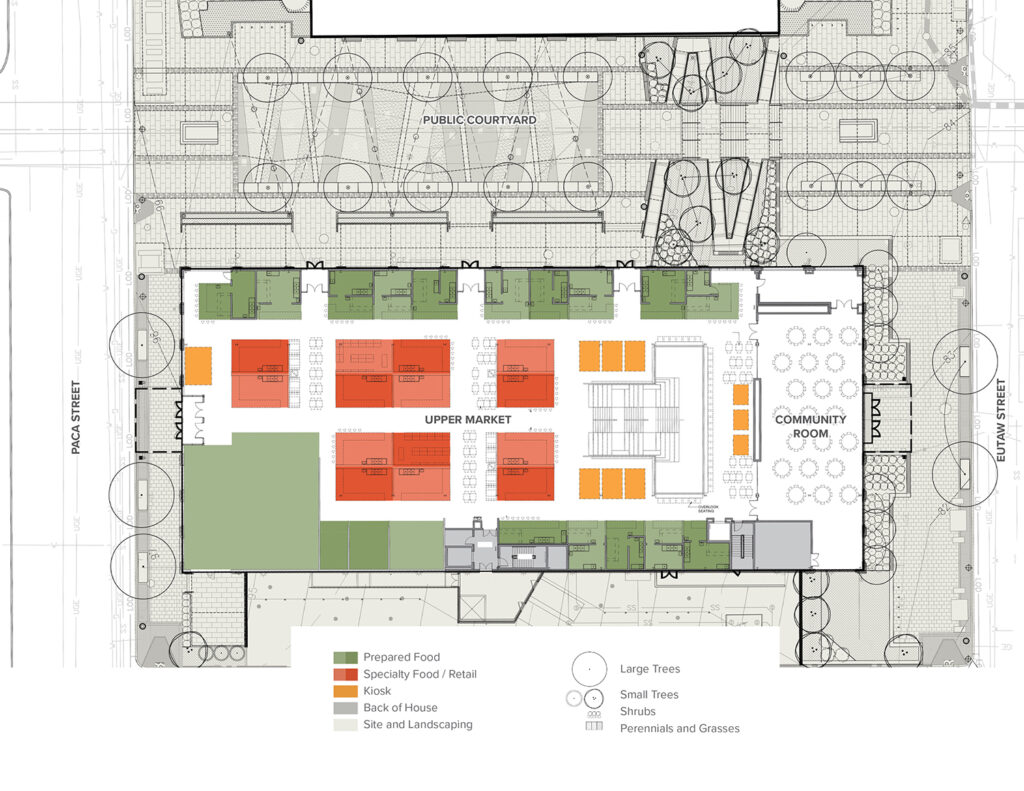
The redesign emphasizes healthy lifestyles, historic preservation, and community diversity. Offering a wide array of cuisines and hosting social events, the market serves as a vibrant gathering space. Its central location and easy access to public transportation enhance convenience, while supporting local entrepreneurship and small businesses.
